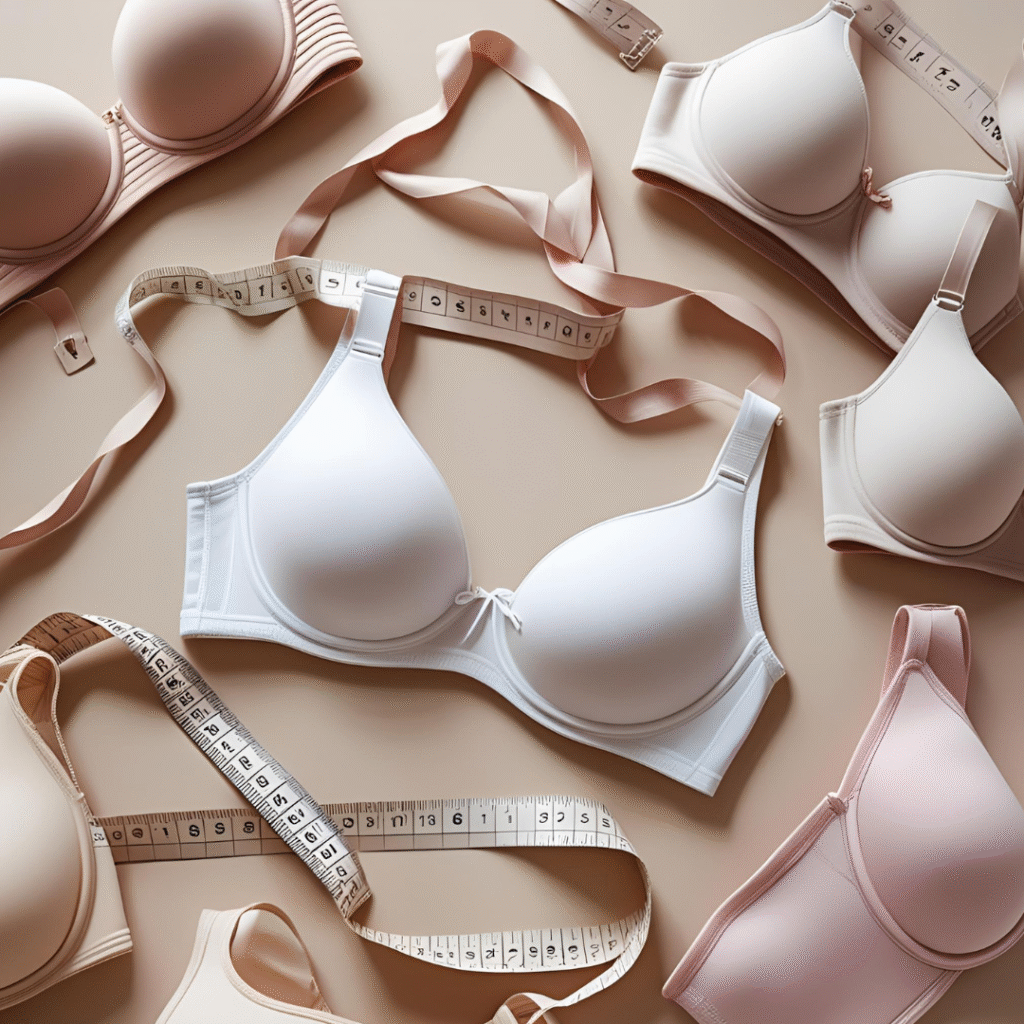You might think your bra size is a fixed number—like your shoe size or your height. But here’s the surprising truth: your bra size can change more often than you realize, sometimes even within a single year.
So, how often does your bra size actually change? For many women, it shifts every 6 to 12 months due to subtle (or not-so-subtle) changes in weight, hormones, lifestyle, or life stage. Wearing the wrong bra isn’t just about looks—it can cause pain, bad posture, and harm your breast health over time
That’s why understanding the factors behind these changes—and recognizing when it’s time to remeasure—isn’t just smart, it’s essential. In this article, we’ll explore how often you should check your size, what causes your size to shift, how to spot the signs your bra no longer fits, and the expert-backed guidance to keep you supported, comfortable, and confident.
How Often Should You Check Your Bra Size?
Experts say you should measure your bra size every 6 to 12 months. Even small fluctuations in your body—just a few pounds gained or lost—can subtly shift the fit of your bra. That’s because your breasts are made up largely of fatty tissue, which can change more quickly than you think.
But timing isn’t the only factor. Major life events like pregnancy, breastfeeding, menopause, or even starting a new workout routine can all lead to noticeable changes in your size and shape. If your bras suddenly feel tight, loose, or just plain wrong, it’s time for a fitting—regardless of when your last one was.
“Your bra should fit your body—not the other way around,” says Kimmay Caldwell, an undergarment educator and fit specialist. “If your bra feels uncomfortable, listen to your body and measure again.. It’s not about chasing a perfect size; it’s about finding your current fit.”
Why Does Bra Size Change?
Your bra size is more like a moving target than a fixed number—and there are several key reasons behind those shifts. Let’s break it down:
A. Weight Fluctuations
Whether you gain or lose a few pounds, your breasts often notice first. That’s because breast tissue is largely composed of fat, and even a 5–10 pound change can affect both cup and band size. Gaining weight may add volume to your bust, while losing it can lead to a looser fit or even gapping cups.
B. Hormonal Shifts
Hormones have a powerful influence on your breast size and sensitivity.
- Menstrual cycles can cause monthly swelling—sometimes up to a full cup size—thanks to water retention and hormonal surges.
- Birth control and fertility treatments can also trigger changes in breast volume and tenderness.
- Menopause typically reduces estrogen levels, leading to softer, less dense breast tissue, and often a shift in bra size and shape.
C. Pregnancy & Breastfeeding
Pregnancy triggers dramatic hormonal changes that cause breasts to become fuller and heavier as the body prepares for lactation. During breastfeeding, breasts may remain larger and denser, and after weaning, some women return to their original size—while others do not. Every body responds differently, making regular fittings essential during and after this time.
D. Aging
As you get older, the proteins called collagen and elastin that keep your skin firm start to break down. The result? Breasts may lose volume, firmness, and shape, often leading to a need for different cup shapes or support levels. Post-menopause, many women notice a size drop, along with a shift in where breast tissue sits on the chest.
E. Lifestyle Factors
Your workout routine might be reshaping more than your muscles. Strength training, especially exercises that target the chest and back, can increase muscle mass around the ribcage, affecting your band size. High-impact activities may also lead you to choose more structured, supportive bras, revealing if your everyday size has changed.
Signs You Need a Bra Fitting (Even If You Think You Don’t)
Even if your bra technically fits, your body might be telling a different story. Here are the telltale signs it’s time to get remeasured—stat:
1. Physical Discomfort
If your bra leaves red marks, causes shoulder or back pain, or makes you want to rip it off the second you get home, something’s off. A properly fitted bra should feel supportive—not like a cage.
2. Slipping Straps
Constantly pulling up your straps? That’s not just annoying—it’s a signal your band or cup size might be off. Straps slipping usually means your cups are too big, your band is too loose, or the bra has simply stretched out with wear.
3. Band Issues
If the band rides up your back, digs in uncomfortably, or feels like it’s squeezing your ribcage, it’s not doing its job. The band provides most of the support, so a poor fit here throws everything off.
4. Cup Overflow or Gaping
Spilling over the top or sides of your bra? That means the cup is too small. Gaping or wrinkling in the cup? That’s usually a sign the cup is too large. Either way, it’s a mismatch—and it’s time to try a different size or style.
Trust the signs. Bras aren’t meant to be a daily battle—they’re meant to lift, support, and fit.
Expert Guidelines at a Glance
Here’s a quick-reference table summarizing when to recheck your bra size—and why it matters:
| When to Recheck | Why It Matters |
| Every 6–12 months | Natural body changes occur over time, even without obvious weight shift |
| After weight gain or loss | Affects both cup and band size due to fat distribution in breast tissue |
| After pregnancy or breastfeeding | Hormonal changes and milk production reshape breast size and density |
| During hormonal changes | Birth control, menopause, or cycle shifts can increase or reduce volume |
| If you feel discomfort | Pain, digging, slipping, or poor posture may signal incorrect fit |
| Lifestyle or exercise changes | Muscle gain or loss, especially in the chest/back, affects band fit |
Final Thoughts
Your bra size isn’t meant to stay the same forever—and that’s completely normal. In fact, it’s a sign your body is doing exactly what it’s supposed to: changing, adapting, and evolving through every stage of life.
Regular bra fittings—every 6 to 12 months or after major changes—aren’t just about finding a better fit. They’re about reclaiming your comfort, boosting your confidence, and supporting your body exactly as it is, right now.
So don’t wait until your straps dig or your cups overflow. Be proactive. Treat a bra fitting like a wellness check—not a chore. Because when your bra fits right, everything else falls into place.
FAQs
1. How do I know if my bra size has changed?
Look for signs like discomfort, gaping or overflow in cups, slipping straps, or tight bands.
2. Can my bra size change during my menstrual cycle?
Yes, hormonal fluctuations can temporarily increase breast size, sometimes by a full cup.
3. How does pregnancy affect my bra size long-term?
Some women return to their pre-pregnancy size, while others experience lasting changes.
4. What’s the best way to measure my bra size at home?
Use a soft tape to measure your band and bust, then use a reliable sizing chart or calculator.5. Are online bra size calculators accurate?
They’re helpful starting points, but a professional fitting is always more precise

